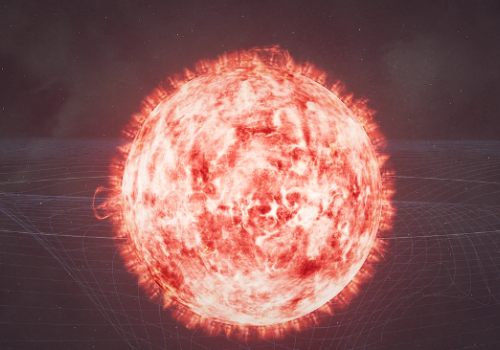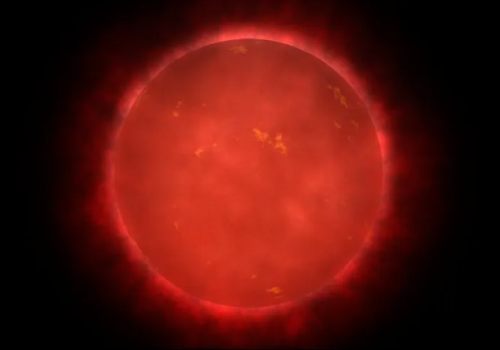Our Sun is one of billions of stars in the galaxy – and is extremely important to life on Earth. Among those, a few are our closest companions in the cosmic neighborhood. Such nearby stars are considered stellar neighbors and are very useful in astronomical studies of stellar evolution, the nature of planetary systems, and life beyond our solar system.

The closest stars – the smaller, dimmer stars – are in what we might call a “twilight zone.” Such stars we can not see with our eyes but are very important to our understanding of the universe.
Stellar Neighbors – What Are They
Stellar neighbors are stars that are within a few light-years of the Sun. Their nearest is Proxima Centauri, at 4.24 light-years away. This may seem like an enormous distance, but astronomically, Proxima Centauri is right next door.
These stellar neighbors include large luminous stars and small, weak ones called red dwarfs. The red dwarfs, in particular, are the most common and least visible stars in the galaxy.
Proxima Centauri: Nearest Stellar Neighbor
The closest known star is Proxima Centauri in the Alpha Centauri system. This small red dwarf star has a mass of about one-eighth that of the Sun and shines far more dimly, so it can be difficult to observe without telescopes.
Most interesting about Proxima Centauri is the possibility of planets being settled within its habitable zone. In 2016, scientists found an exoplanet called Proxima b orbiting somewhere where liquid water might be. This has created excitement about life outside our solar system.
Alpha Centauri System: A Stellar Trio
Our next closest stellar neighbor is the Alpha Centauri system, 4.37 light-years away. This system has three stars: Alpha Centauri A, Alpha Centauri B & Proxima Centauri. Alpha Centauri A & B are Sun-like stars, and Proxima is the small red dwarf we just discussed.
Its proximity makes this star system a good candidate for searching for exoplanets. In fact, astronomers have evidence that Earth-sized planets may exist around Alpha Centauri A and B as new technologies and space exploration missions develop.

Other Nearby Stars Barnard’s Star: A Fast-Moving Neighbor
Barnard’s star is a red dwarf six light-years from the Sun and has attracted astronomers because of its high proper motion. This means Barnard’s star is moving faster than any other Star on Earth’s surface. Its rapid motion has given it the nickname the “fastest star.”
It is much darker than our Sun, but Barnard’s Star is old – between 7 and 12 billion years old. So, it is among our neighborhood’s oldest stars. No known habitable planets surround it but more research is under way.

Wolf 359: A Faint Red Dwarf
Wolf 359 is another nearby red dwarf that barely produces enough light to be seen with a telescope (7) 8.8 light-years away. It is so dim even by nightfall that it is almost undetectable.
Wolf 359 is a very long-lived red dwarf. It is not a bright star but due to its endurance, it is one of the most common types of stars in the universe. Its quiet life contrasts with the explosions and dramatic lives of larger stars.
Red Dwarfs – Their Significance Understanding Red Dwarfs
Red dwarfs have the greatest number of stars and live the longest. They burn their fuel very slowly, so they can shine for trillions of years – much longer than the estimated 10-billion-year life of a star like our Sun.
Red dwarfs are often underrated because they are so dim. Our closest stellar neighbors are red dwarfs, but most are unexplored. Their longevity and stability have made them desirable targets for searching for possibly habitable exoplanets.
Potential for Life
Potential habitability is probably the most compelling reason to study our nearest stellar neighbors – red dwarfs like Proxima Centauri. Planets within the habitable zone of red dwarfs may have liquid water as food for life.
As red dwarfs live such long lives, any planets that form around them would take billions or trillions of years to develop life. While red dwarfs often have large solar flares that strip atmospheres from nearby planets, scientists still study how life might adapt to such environments.
Exploration: Future Missions Space Telescopes and Probes
With new technologies come faster studies of our stellar neighbors. Space telescopes like the James Webb Space Telescope (JWST) and proposed missions like Breakthrough Starshot seek out distant stars and their planets in unprecedented detail.
JWST should give better images and data of planets orbiting nearby stars, especially Alpha Centauri. Breakthrough Starshot sends tiny probes to Proxima Centauri at the speed of light. It could return the first close-up pictures of another star and its planets if successful.
The Search for Earth-like Planets
Our nearest stars are studied primarily for Earth-like planets that may contain life. With so many red dwarfs in our cosmic neighborhood, searching for life beyond Earth is more focused than ever.
We will probably learn more about the planets orbiting these nearby stars as technology improves. It is yet to be seen whether we find evidence of life, but each new development brings us closer to answering the age-old question: Is there life? Were we alone in the universe?
Conclusion
From Proxima Centauri to Barnard’s Star, our nearest stellar neighbors give us a window onto the stars of the universe. These stars are in relative “twilight”, but they can tell us about possible habitable planets and future space travel.
The mysteries of these stars – and any planets that may orbit them – are closer than ever to being revealed, thanks to ongoing research and future missions. Perhaps someday, the stars in our neighborhood won’t be so far away after all.
